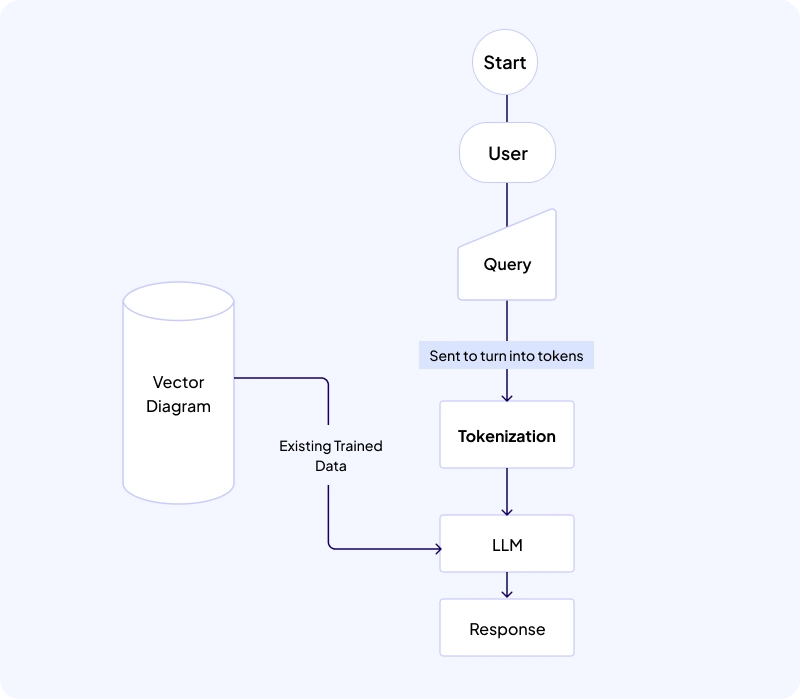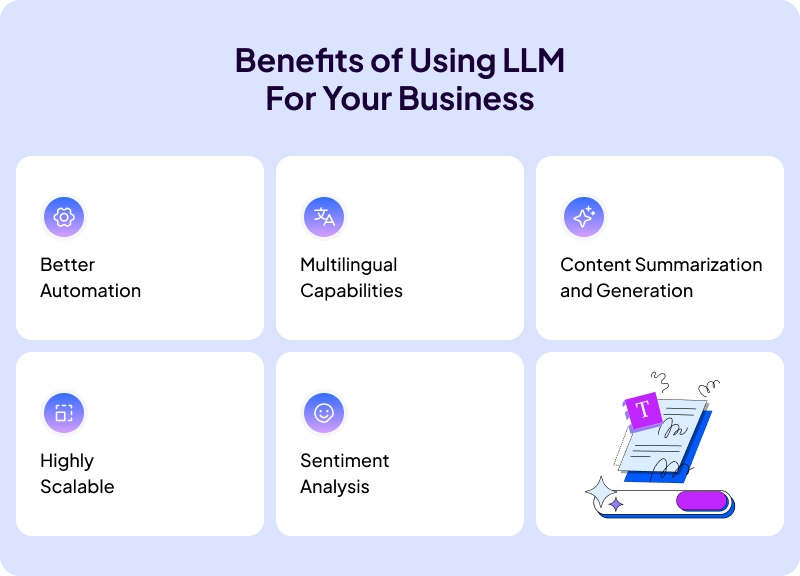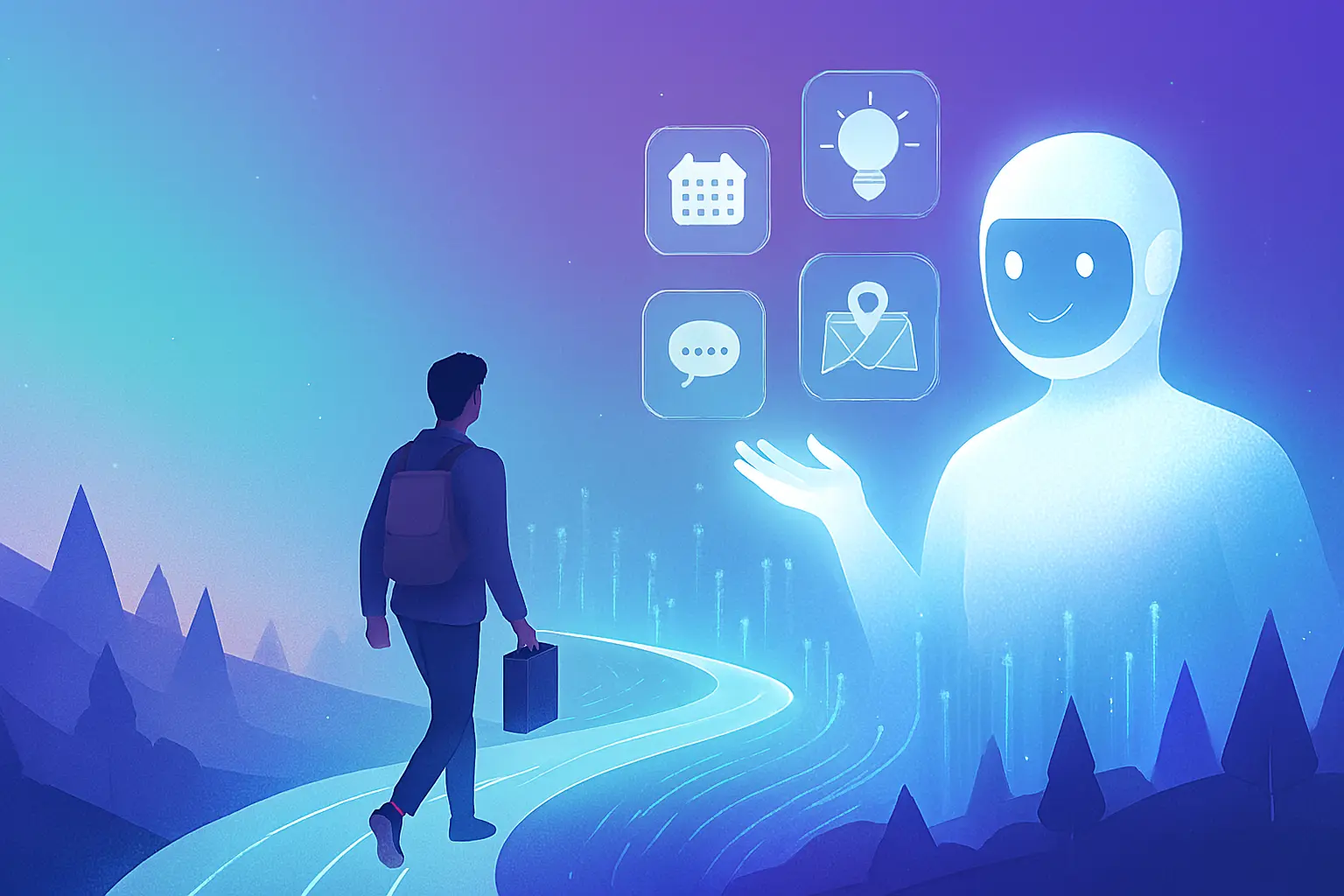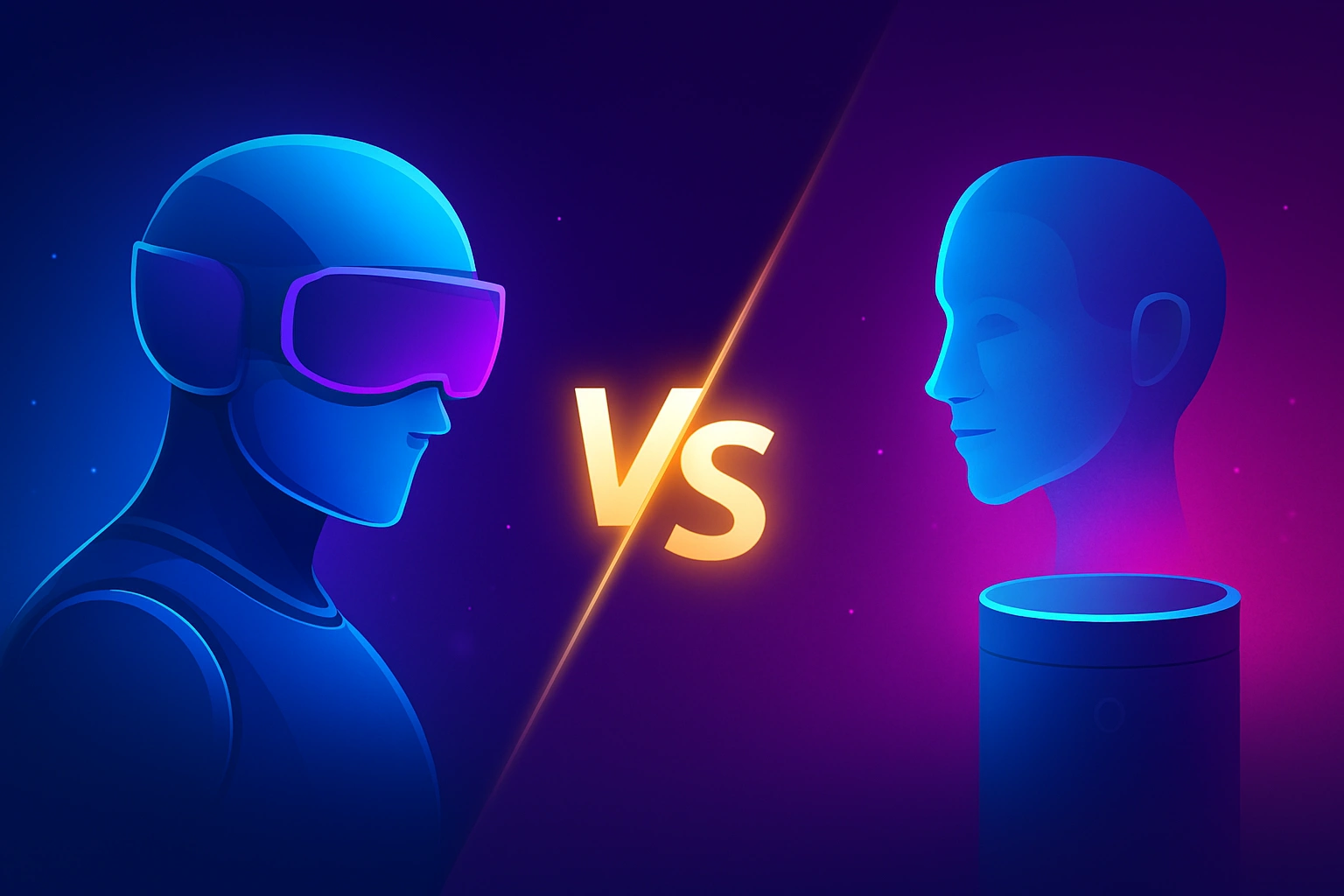What is a Large Language Model (LLM) and How Does It Work?
- December 12, 2024
- 11 mins read
- Listen

Generative AI has revolutionized the world with the introduction of Large Language Models (LLMs). It is such a technology that allows businesses to streamline their work and generate content at a high level. Essentially, making businesses a lot better with just one technology implemented.
Not to mention that the content generated by the LLM is done based on prediction due to machine learning and deep learning to understand the words being inputted and created. So, with that many different technologies leading to the creation of LLMs, it is the best innovation in the AI world in a while.
Businesses have understood the value of this and have started to use LLM for a variety of use cases. Whether it be content generation, data analysis, or serving as a base for a chatbot, LLMs are exceptional at doing tedious text-related work.
So, let’s try to understand what an LLM is, how it works, and why a business should invest in the technology.
What is a Large Language Model (LLM)?
A Large Language Model is a type of Generative AI that can train itself with a huge amount of data. Using the information learned, users can ask the LLM to generate content, and it will do so, provided the data is available. LLMs are not only fast, but they also work efficiently and with good accuracy.
That said, an LLM is more than a text generator. It can analyze documents and then refer to it whenever a user may ask for related information. Also, LLMs are capable of mimicking and presenting any language like a human would.
How Do Large Language Models Work?
At this point, we all agree that LLMs are revolutionary. However, the processes behind it are extremely complicated. There are a lot of different processes that occur, like machine learning and deep learning. Even more specifically, LLMs are made from a specific neural network called the transformer model.
This architecture allows LLMs to learn more information. Through the use of the Transformer model, LLMs are capable of understanding words, refining the knowledge of an LLM, and more.
However, to help you understand how LLMs work, we have created a simplified workflow of how the technology works. Below is the simplified flowchart of how an LLM works.

Other than the flow chart, below is a full list of processes LLMs carry out their work.
Training
Since LLMs mostly generate content, it is not as simple as putting words together. To make it useful and personalized, the LLM is configured to generate words based on predictions. First, the LLM is trained or given data from different sources like documents, articles, websites, etc. This is through the use of word embeddings, which are numerical versions of the words. Once trained, this information stays in the Knowledge Base.
There are two further types of future data training.
- Pretraining: The model is given large, unstructured documents to learn.
- Fine-Tuning: Smaller and more specific types of information are given to the LLM to learn more specialized information.
Input
The first part of the process is receiving a query from the user. This input will be a query or question that the LLM has to break down and understand how to answer said statement. After the input is entered, a process called Tokenization starts.
Creating Tokens
After a query is received, it is sent to a tokenizer before being sent to the LLM. The tokenizer will convert the query into tokens (essentially vector data). Using Tokens, the LLM can learn what the words mean and the context of the input to use for Generation.
Generation
The LLM will receive data from the Knowledge Base and Tokens from the Tokenizer to create a response for the user. Tokens are used to understand the meaning behind the query, and the LLM takes data from the Knowledge Base to generate text by using some predictions as well. This is done through many processes of machine learning and deep learning.
Output
After this, the generated tokens are turned into text and then returned in the language that the query was in.
Through these processes, LLMs learn information and generate based on what they know so far. This entire system is fast and simplifies the load for many businesses when it comes to understanding the loads of documents they have for whatever purpose they may have.
Benefits of Using LLM For Your Business
With such technology as LLMs, they can help you transform your business. By automating certain tasks and simplifying processes, LLMs can provide many benefits. Here are some of the most important benefits an LLM can give to your business.

Better Automation
With the power of LLM, businesses can automate a lot of their menial work. Whether it be analyzing a 20-page document or customer service, all of this can be automated through the power of LLM.
For customer service, you will be getting better live chat options and smarter chatbots through the power of personalization that LLMs provide. Chatbots are now equipped with more data to respond with and are not reliant on rules. Thus, your chatbot has more features and freedom to converse with people.
As mentioned earlier, due to LLM’s large data learning, you can also use it in multiple industries to automate many time-consuming tasks, like data analysis.
Our products allow you to use LLM chatbots to transform your customer service. Through its deep learning capabilities and semantic analysis, our chatbots are capable of conversing with customers in a more personalized manner.
Multilingual Capabilities
An LLM is capable of learning and conversing in any language through Natural Language Processing (NLP). This technique allows LLMs to open doors to faster and better translations, conversing in multiple languages, and more.
So a user can initiate a conversation with a multilingual chatbot powered by LLM and converse in any language that they desire. All this without the need for additional steps or setup.
This is why products like REVE Chat use LLMs to cater to international clients. As there is a language barrier, a technology like NLP allows LLMs to converse in multiple languages, which is great for multinational companies and foreign clients.
Content Summarization & Generation
LLMs deal mostly with text, so that means a large portion of their process relies on analyzing, learning, and generating new content. Through this, LLMs learn how to speak like a human and then generate content as such.
LLMs are capable of taking in huge amounts of data and summarizing it into simple and important points. Also, using this technology, you can personalize conversations and text generation through semantic analysis. Lastly, rewriting and any form of transcription can be done easily with LLMs.
Thus, LLMs have changed how industries work with their extensive text-related functionalities. Companies no longer have to do the content reading and writing fully by hand. Instead, all they have to do is take ideas from an LLM or generate them using prompts.
Highly Scalable
LLM is one of the more adaptive and wide-reaching technologies. It transcends industries as all of them can make use of LLMs. Whether it be through document analysis, content generation, or data research, an LLM can do most of your time-consuming and menial tasks with more efficiency.
Having said that, what makes LLMs even more appealing is that one LLM can handle multiple different use cases. As long as the Knowledge Base is trained on information, the LLM can answer any queries based on that.
Thus, with one LLM, you can expand your business to cover different areas of need and not having a need to spend more resources. That not only makes LLMs highly scalable but also makes them fairly cost-effective.
Sentiment Analysis
What separates a sentence from being just words to having a meaning is the sentiment behind it. To understand the purpose of the statement, LLMs carry out a process called sentiment analysis, which dissects the meaning of the sentence.
Using this, LLMs can understand the meaning of a statement and, in extension, an entire paragraph or a doc file. This helps LLMs learn the human tongue and imitate it for content generation.
Examples of LLMs
As Generative AI has massively improved in the past few years, LLMs have been adopted by many companies. However, there are some companies that are strictly creating some models that other software like ours can make use of. Here are some of the best large language models on the market.
GPT
Created by OpenAI, GPT was one of the first innovations in the field of Generative AI. It has redefined our thinking as we know it, as millions of users are using ChatGPT to generate content (including images).
Using such a system, users get what they want, getting the right type of content. Our products use GPT 3.5 or GPT 4 to serve our customers with the generative capabilities that they want. Combining that with chatbots, we offer a business with elite-level content generation at a fairly affordable price.
GPT is continuing to improve its process and features, and the latest GPT 4 version tells that story.
LlaMa
Meta’s take on Generative AI, LlaMa, is also quite a force in the AI space. As a strong competitor, LlaMa offers a lot to the table. While as an LLM, it has excellent content generation, an extensive integration system, etc, there is one thing that sets LlaMa apart, that is security.
While a product like GPT can source your content to train its models, Meta does not do that with LlaMa. LlaMa is open source, allowing companies to develop and adjust it themselves. Also, a GPU would need to be used for it. This is excellent on the development front, but expenses can rise to use LLaMa. Fortunately, products like REVE Chat allow businesses to get LlaMa as their LLM option. We handle the backend, and companies get the benefits of LLM.
With our app in conjunction with LlaMa, our clients get the most out of an LLM with the added security features and data privacy.
Gemini
Google’s latest AI product is Gemini, a direct competitor to ChatGPT. Using Google’s massive platform, they are utilizing Gemini as the main hub of information for any user on the search engine.
The deployment for Gemini has been massive, and Google has made many adjustments to its system. With the introduction of citations and such, this could be another generation of LLMs. Although one may say Gemini is not an LLM but rather a multimodal model but that’s another topic for another day.
Mistral
A unique product created in Europe, Mistral aims to be different from its competitors. It aims to make smaller LLMs for high efficiency while maintaining content generation standards. As a small company, Mistral has made a lot of strides.
By building more efficient models, they are attracting not only businesses but also individual developers. Through their lightweight nature and customization, Mistral is a great product in the AI sector.
Grok
This is a new take by AIx, spearheaded by Elon Musk, to create an LLM for conversations into X. The purpose of the LLM is to show the capabilities of such technology in social media.
Grok 2 is the current version that is making quite the noise. It’s proving itself to be pretty accurate with information and allows users of X to get some context for themselves.
Conclusion
With the advent of Large Language Models, we are headed to a futuristic society where AI can provide fast service while communicating like humans. Thus, LLMs are the future of customer service, and the trends in all industries are showing that.
With this power, your business can break through its limits and become more efficient in the process. This is why a product like REVE Chat can help your business harness the powers of LLM.
Through our chatbots, our clients can transform their customer service features and offer the best support to their consumers. Also, you can personalize your messages with them and collect feedback in a more efficient way.
So, sign up now to use our LLM-based products to take your business to the next level.
Frequently Asked Questions
LLM stands for Large Language Models. It is a type of Generative AI that learns and generates text based on trained data.
The aim with Large Language Models is to understand any language and create content just like a human would. This would simplify text related work and allow businesses and individuals to focus on bigger tasks.
No, NLP is a type of AI technology while LLM is a type of Generative AI. NLP is used to learn various languages while LLM generates based on those patterns. So, in essence, LLMs make use of NLP to learn different languages and learning ways to converse in a personalized manner.
Generative AI is a type of AI that generates text, images, videos, etc. Whereas LLM only deals with text related generation. Thus, LLM is a part of Generative AI.
The latest GPT 4o version is a type of LLM used on ChatGPT made by OpenAI. Other examples include LlaMa made by Meta, Gemini created by Google, and Grok pioneered by AIx.




